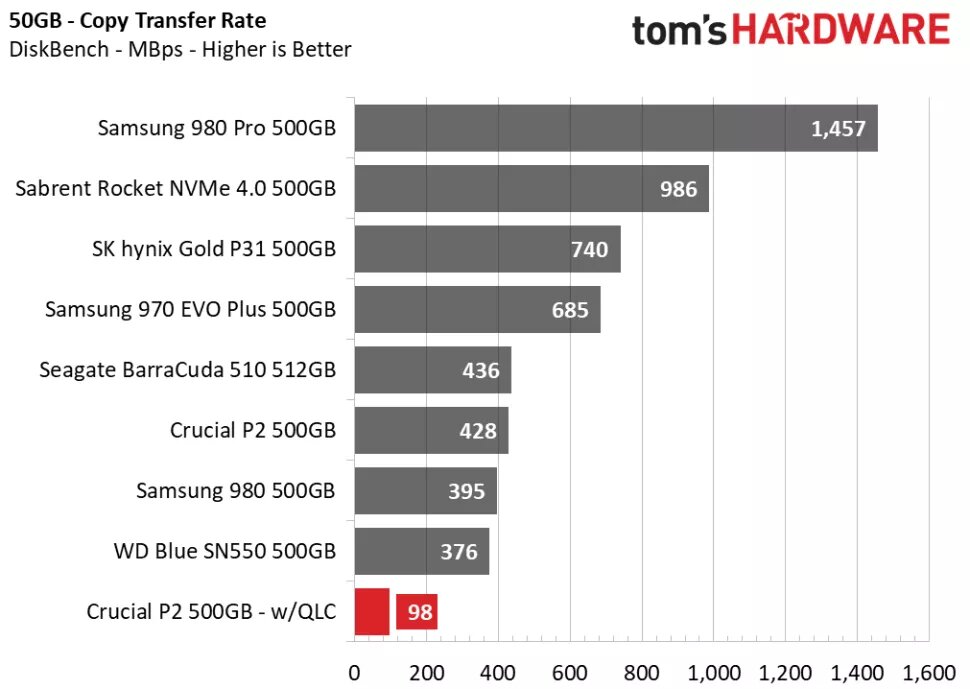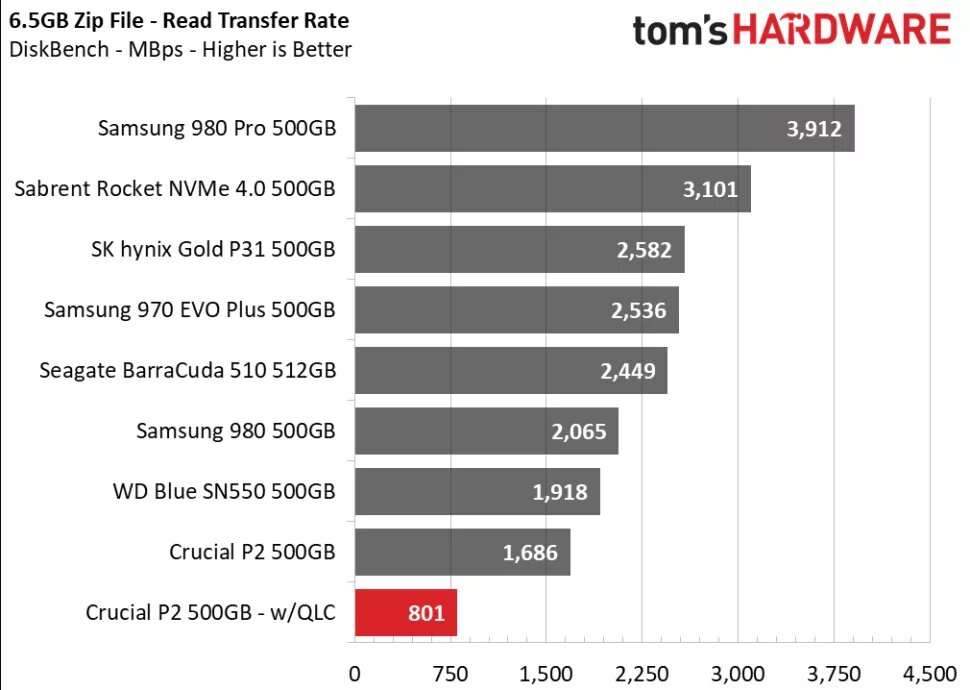In the meantime, Crucial has switched from TLC to QLC NAND memory for the P2 SSD series. The memory change significantly worsens the performance depending on the scenario, as the first tests of the new models reveal. The problem is that this is not marked and previous tests are based on the faster TLC versions.
Market start with TLC-NAND
In April 2020 Crucial presented the NVMe SSD series P2 in the M.2 form factor with PCIe 3.0 x4. While the official data sheet (PDF) named neither the controller nor the memory type, and has not been disclosed to this day, Crucial explained on request that the Phison E13T is used without DRAM and TLC-NAND-Flash. However, according to its own information, the company reserved the right to later expand the series to include models with QLC. Crucial wanted to make this dependent on market development and demand.
New variants with QLC in retail
Quietly and secretly, as other manufacturers do, however, new versions of the Crucial P2 with QLC-NAND have now been brought onto the market. However, since these are not specially marked, the customer does not initially notice anything until the nasty surprise threatens at some point.
Test shows massive loss of performance
In a test, Tom & apos; s hardware compares the performance of a new P2 with 500 GB and QLC with the old version with 500 GB and TLC. While there is practically no difference in the loading time for a game, the disadvantage of the copy test is immense: The 50 GB folder was only copied at 98 MB/s, which is around a quarter of the transfer rate of the TLC version of the P2. Only half of the performance was measured when reading a 6.5 GB zip archive.
-
 50 GB copy test (picture: Tom & apos; s Hardware)
50 GB copy test (picture: Tom & apos; s Hardware)
picture 1 of 6
 Copy test 50 GB
Copy test 50 GB  Read 6.5 GB zip file
Read 6.5 GB zip file  Final Fantasy XIV loading time
Final Fantasy XIV loading time  PCMark 10 Full System Drive Benchmark
PCMark 10 Full System Drive Benchmark  ATTO sequential reading QD1
ATTO sequential reading QD1 In the Quick System Drive benchmark of PCMark10, the P2 with QLC achieved almost the same number of points as the P2 with TLC. But in the Full System Drive benchmark with a higher workload, the performance dropped by 40 percent. The measurements for the SLC mode showed a considerably larger SLC cache for the QLC version (135 GB instead of 24 GB), but the write rate then drops to 40 MB/s, while the TLC version still manages 450 MB/s .
In the ATTO benchmark, the QLC variant clearly outperformed the TLC version with around 3,000 MB/s when reading and even exceeds the manufacturer's specification of 2,400 MB/s.
No more recommendation even at a low price
However, since performance counts in practice apart from such synthetic benchmarks, Tom & apos; s Hardware finally finds clear words: “For those who are looking for a cheap SSD, we no longer recommend the Crucial P2. Rather, we would go so far as to put them on our “don't buy” list ”.
The testers assume that the entire series will be equipped with QLC memory. Accordingly, the supposedly inexpensive Crucial P2 with 1 TB, which is currently available from 70 euros, would only be a price tip with glaring weaknesses.
You wouldn't know that, though, if you hadn't read this article: Every review that you see of the P2 has higher performance values than what you'll see with the new models. There's no way to tell which drive is which, so it's best to assume that all P2 SSDs on the market come with QLC flash now, and the Crucial P2 won't live up to its billing in the numerous product reviews you'll find on the internet.
We no longer recommend Crucial's P2 for those seeking a value-level SSD. Rather, we would go as far as to place it on our ‘do not buy’ list.
Tom & apos; s Hardware

